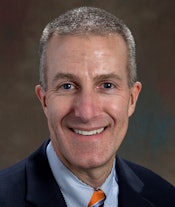
More than 50% of Medicare payments for diagnostic imaging services in the U.S. are made to nonradiologists, according to a study published in the May issue of the American Journal of Roentgenology. In fact, Medicare payments to nonradiologists for diagnostic imaging exceed those to radiologists in almost 60% of states.
That's according to Dr. David Rosman, of Massachusetts General Hospital, and colleagues, who believe the findings indicate that efforts to cut imaging growth by targeting radiologists could be misguided.
"Although radiologists are traditionally considered the dominant providers of medical imaging, a number of analyses have shown that medical imaging services billed by nonradiologists ... are increasing and may actually outnumber those billed by radiologists," the researchers wrote.
What's the deal?
Self-referral could be one culprit. "Although we cannot assert causation on the basis of our analysis, the association of higher nonradiologist spending and higher overall spending reinforces the findings of prior publications that medical imaging growth can be driven or exacerbated by self-referral," Rosman and colleagues wrote.
The researchers used a 5% random sample of claims from approximately 2.5 million Medicare Part B beneficiaries in 2011 to calculate total spending on a state-by-state and regional basis for all Medicare-covered medical imaging services. They also identified payments to radiologists separately from those to all other healthcare providers (AJR, May 2015, Vol. 204:5, pp. 1042-1048).
Mean national diagnostic imaging spending per Medicare beneficiary was $207.17, with an average of $95.71 (46.2%) sent to radiologists and $111.46 (53.8%) to nonradiologists, the group found. The relative percentage of Medicare Physician Fee Schedule (MPFS) payments to nonradiologists was highest in the South, at 58.5%, and lowest in the Northeast, at 48%.
The percentage of total MPFS payments for diagnostic imaging to nonradiologists exceeded the percentage to radiologists in 58.8% of states, Rosman and colleagues wrote. The percentage of spending for nonradiologists ranged from a low of 32% in Minnesota to a high of 69.5% in South Carolina.
The following 10 states had the lowest percentage of payments to radiologists:
- South Carolina (30.5%)
- Georgia (35.1%)
- Alabama (35.5%)
- Texas (35.7%)
- Louisiana (36.6%)
- Oklahoma (40%)
- Mississippi (41.9%)
- Arkansas (42%)
- Michigan (42%)
- Florida (42.6%)
These 10 states had the highest percentage of payments to radiologists:
- Minnesota (68%)
- North Dakota (65.6%)
- Vermont (61.7%)
- Wisconsin (60.8%)
- Wyoming (60.8%)
- Montana (60.7%)
- Hawaii (59.8%)
- Idaho (58.6%)
- Maryland (57.8%)
- Alaska (57.4%)
Of the $111.46 per Medicare beneficiary paid to nonradiologists, the largest portions went to cardiology (41%), internal medicine (8.5%), and orthopedic surgery (6.6%); the top three modalities most commonly billed were ultrasound (39.7%), nuclear medicine (22.2%), and x-ray (20.3%).
Ongoing erosion for radiologists?
Over the past 15 years, radiologists' share of MPFS payments for noninvasive diagnostic imaging has eroded, although radiologists still receive the majority of professional payments, Rosman and colleagues wrote. However, global and technical spending, which are tied to equipment ownership, are distributed differently.
"Radiologists claim a majority of technical-only payments in just one state (Arizona) and nonradiologists claim 70.1% of global spending nationwide," they wrote. "In the states in which nonradiologists claim 60% or greater of total medical imaging payments, they capture 93.5% of technical-only and 84.3% of global payments."
 Dr. Richard Duszak from Emory University.
Dr. Richard Duszak from Emory University.The fact that spending overall is generally higher in states where more imaging dollars go to nonradiologists is of particular note, according to study co-author Dr. Richard Duszak.
"This means there are probably opportunities for more judicious use of imaging by physicians that may not be as familiar as radiologists are with the ACR Appropriateness Criteria or issues related to radiation safety," he told AuntMinnie.com via email.
In any case, as payment methodologies shift from fee-for-service to various bundled and capitated models, an understanding of proportional spending on imaging attributable to radiologists versus nonradiologists is crucial for establishing a framework for these new models.
"This majority spending on nonradiologists may have implications in bundled and capitated payment models for radiology services," the authors concluded. "Medical imaging payment policy initiatives must consider the roles of all provider groups and associated regional variation."




















